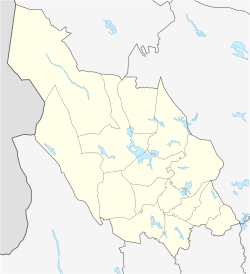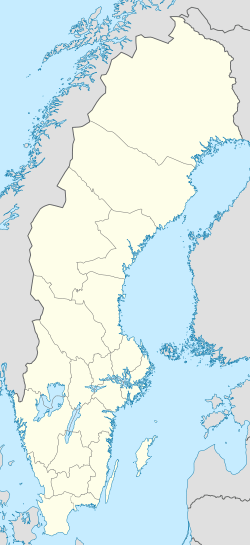Grängesberg facts for kids
Quick facts for kids
Grängesberg
|
|
|---|---|

Grängesberg Train Station
|
|
| Country | Sweden |
| Province | Dalarna |
| County | Dalarna County |
| Municipality | Ludvika Municipality |
| Area | |
| • Total | 7.72 km2 (2.98 sq mi) |
| Population
(31 December 2010)
|
|
| • Total | 3,481 |
| • Density | 451/km2 (1,170/sq mi) |
| Time zone | UTC+1 (CET) |
| • Summer (DST) | UTC+2 (CEST) |
Grängesberg is a town in Sweden. It is located in Dalarna County and is part of Ludvika Municipality. In 2010, about 3,481 people lived here.
For a long time, from the 1500s until 1989, Grängesberg was very important for its iron ore mines. Iron ore is a rock from which we get iron, a strong metal used to build many things. The last train carrying iron ore left Grängesberg in January 1990.
People also worked to separate a mineral called apatite from the iron ore. This process became more successful from the late 1930s to 1953.
Grängesberg's History and Growth
A company called Grängesbergsbolaget was once very important in Grängesberg. For a while, it owned the world's largest fleet of ships that carried iron ore. Around 1899–1900, it was even Sweden's most profitable company!
Because of this successful company, Grängesberg grew very quickly. In just ten years, the town's population became three times larger.
Today, the biggest employer in Grängesberg is a company called Spendrups. They are known for making drinks.
Things to See
Grängesberg is also known for its Railway Museum of Grängesberg. This museum shows the history of trains and railways in the area. It's a great place to learn about how trains helped transport the iron ore and connect the town.



